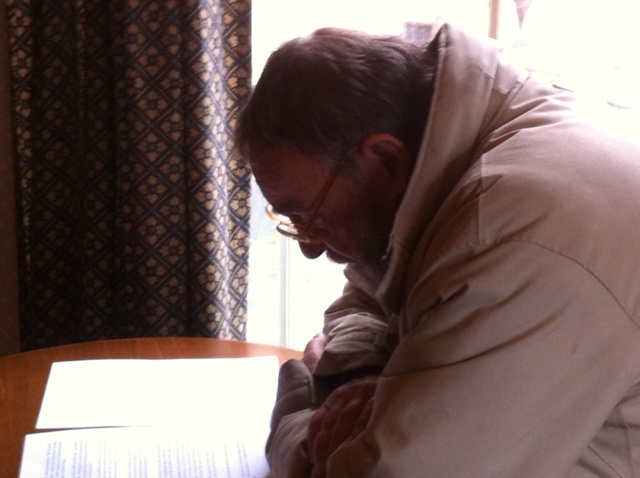Some time ago, I began researching an unsolved murder which took place in the Carmarthenshire mining village of Garnant in 1921.
I began writing a blog on the subject and Americymru were kind enough to post entries and an interview with me on this site.
Thanks to my research, I believe I have finally solved the murder at Star Stores and identified the killer.
The project moved on from its original idea as a blog and this month, Seren Books published Murder at the Star.

For those who might be interested, here is an article I was recently asked to write for the BBC Wales website:
At 10.15 on the night of Saturday, February 12, 1921, Diana Bowen and her daughters left the fruit shop at Number Three, Commerce Place, in the Carmarthenshire mining village of Garnant.
Diana was to be the only adult witness to the murder at the Star.
The Bowens had taken no more than a few steps when they were heard a most ungodly noise from behind the blinds of the Star Supply Stores, the upmarket national chain next door.
“It was an awful screech,” Diana told the Amman Valley Chronicle.
“There was a thud and the sound of running feet.
“I was going to have a look, but after hearing running on the stairs I thought everything was all right.
“I thought the boy in the shop had had his hand in the bacon-slicing machine.”
Shortly after midnight, across the valley at Glanyrafon Villas, Thomas Hooper Mountstephens was waiting for his lodgers to come home when one, Arthur Impey, arrived after a shift at Gellyceidrim colliery.
The two men could see the glow of the gas lights through the rear window of the Star and Impey suggested that they walk over to ensure that all was well.
Mountstephens refused.
An hour later, Impey grew concerned. It was most unlike the chapel-going, Bible-quoting, almost deaf Mr Thomas – sickly, frail and lame, and having undergone nasal surgery at a clinic in Swansea just the week before – to be out so late.
Again he urged Mountstephens to accompany him to the Star.
Mountstephens’ refusal would see him branded a killer for almost 95 years.
As Mountstephens fed his chickens the lodger’s uneaten supper morning, the body of Thomas Thomas was discovered across the valley, dead behind the provisions counter of the Star.
His throat was slashed open and his head had been battered, shattering the temporal and parietal bones with such force as to leave eleven separate pieces of bone embedded in Thomas Thomas’ brain. The shopkeeper’s cheek was also fractured in two places.
The upper part of his trousers, the lower part of his waistcoat, and his Cardigan had been unbuttoned before a knife had been plunged into his abdomen. The clothes were undamaged, and some attempt had been made to refasten them after the blow had been struck.
The upper set of the shopkeeper’s dentures lay by his head, embedded in a piece of bloodstained cheese.
A broomhead, smeared in blood, was on the floor, though there was no sign of the handle. Nor could any knife be found.
A total of £128 and two-and-a-half pence had been stolen from the safe – two days takings for the Star and six months wages for a Garnant miner.
A post-mortem, carried out by Dr Evan Jones – the village GP who had studied medicine alongside Arthur Conan Doyle, identified three potentially fatal wounds: The doctor’s analysis of the injuries was to prove crucial to the investigation.
The following day, a bloodstained broomhandle and a boning knife were discovered in a nearby stream.
The Metropolitan Police sent one of their most respected detectives to West Wales
Detective Inspector George Nicholls would one day head the murder squad and be named one of the influential policemen in Britain. He spoke at least half a dozen languages and it was Nicholls who arrested Charles Wells, the man who broke the bank at Monte Carlo.
During World War One, Nicholls had been seconded to Special Branch as a spy-catcher.
He arrived in Garnant on Tuesday, February 15, but the trail was already cold.
The previous day, the woman of Garnant – outraged that the dead man’s blood had been left to cake on the floor of the Star, forced their way into the shop with buckets and mops and scrubbed the premises clean, removing all traces of the culprit and the crime.
Nicholls would spend a month in Garnant, but without evidence had little to go on.
There were, he felt, three main suspects: Mountstephens, who had already been convicted in the court of public opinion; Morgan Jeffreys - the landlord of the Star was seen at the rear of the building around the time of the murder; and an unemployed miner named Tom Morgan, known to be a thief.
Nicholls eliminated Mountstephens – despite the public feeling against him – and Jeffreys from his investigation, and turned his attention to Morgan.
Morgan had spent time in a borstal institution as a youth and had been banned from the collieries due to his habit of claiming other men’s work as his own.
There were though two key elements which exonerated Morgan.
Firstly, he had an alibi.
Most importantly however was the doctor’s assessment that the shopkeeper’s injuries could only have been caused by a right-handed man.
Six months earlier, Morgan had lost the use of his right hand in a bizarre accident that removed all but his thumb and little finger in an explosion which he refused to explain.
Based on Dr Evan Jones unshakeable assertion, it was physically impossible for Morgan to have committed the crime.
Nicholls remained unconvinced and interviewed Morgan on three separate occasions, but thanks to the Garnant ladies there was nothing to connect him to the murder and no basis to undermine the doctor’s analysis of the injuries.
Had Nicholls been able to cast doubt on the doctor’s evidence he would have been able to prove not only that the murder could have been committed by a left-handed man, but that it must have been.
Rather than clearing him, Tom Morgan would have become one of only ten per cent of the population who could have been the killer – and the only actual suspect capable of the crime.
Then perhaps Nicholls would have questioned why every independent witness named in Morgan’s alibi claimed not have seen him and realised that the one person whose word corroborated his whereabouts was complicit in a tissue of lies stretching back almost a decade.
Then, and only then, could Nicholls have proved Tom Morgan committed the murder at the Star.
Murder at the Star is published by Seren Books and is available at all good bookshops as well as Amazon and elsewhere.





